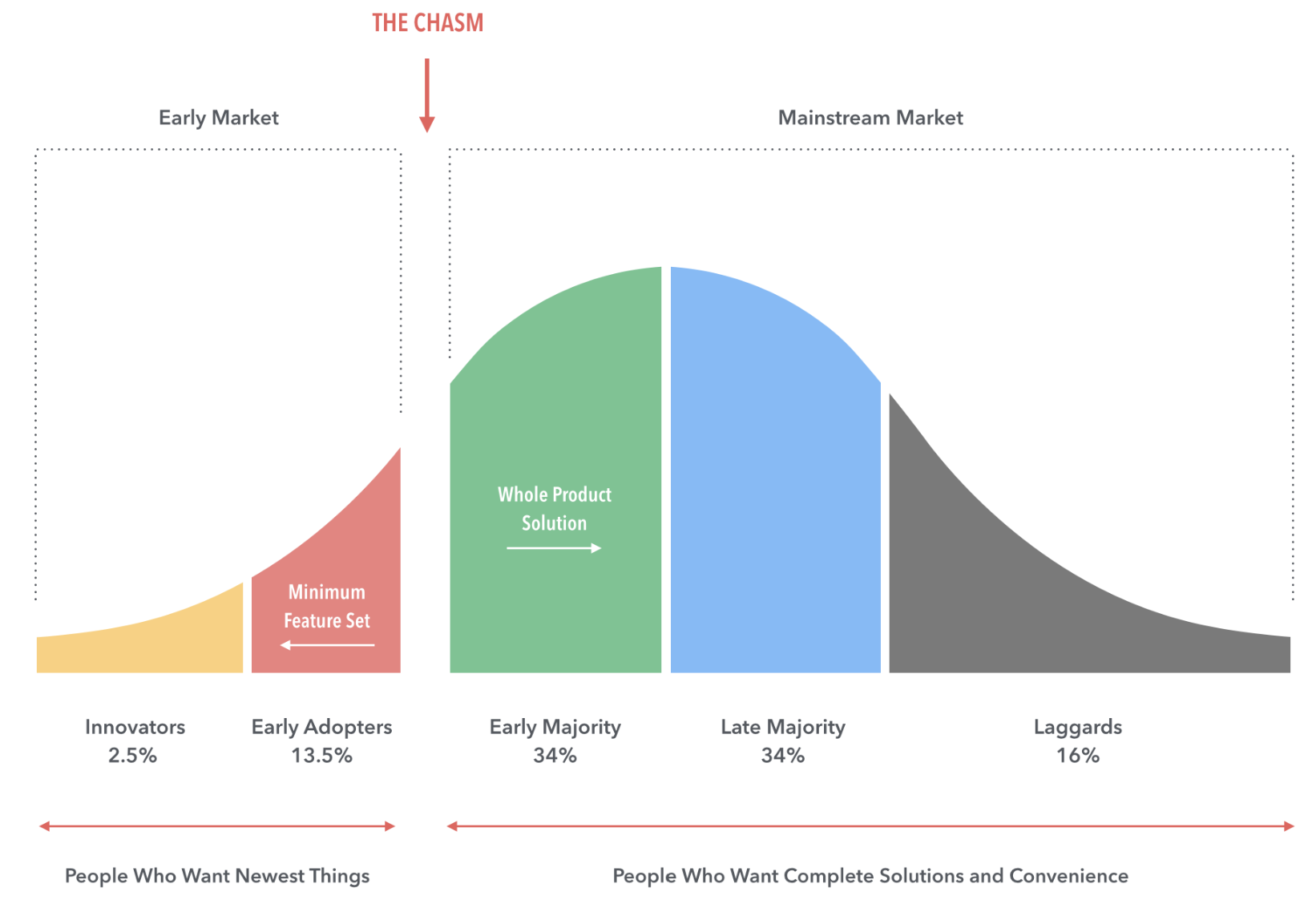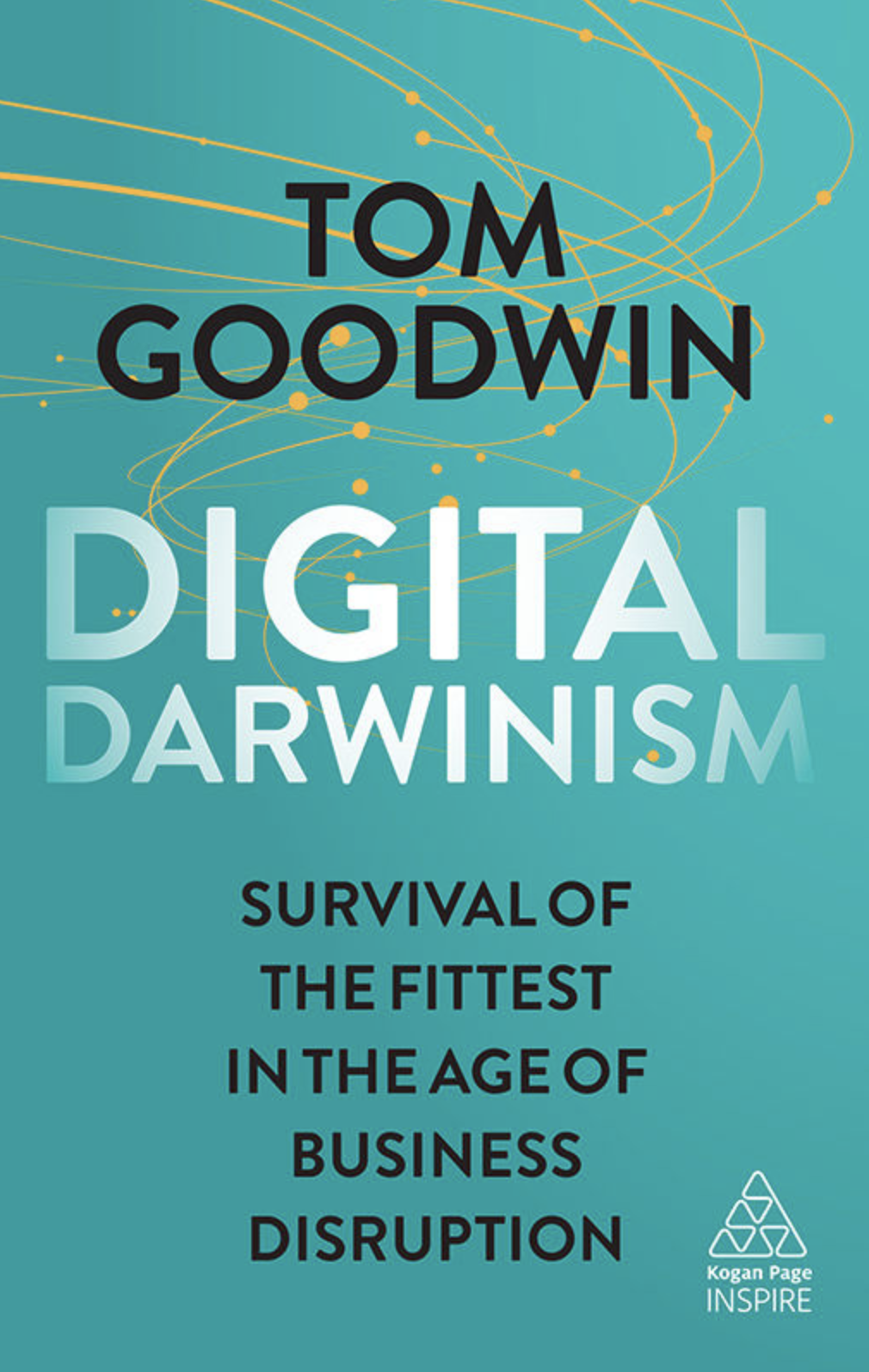 What do you sell?
What do you sell?
Every business owner, sales rep, and marketing professional needs to ask this question on a regular basis.
The answer to this question is typically different than the actual products, services, or solutions you sell. Essentially, you don’t sell a product, you sell results.
In the B2B context where I work, these results can be broken down into four categories:
- A solution to a problem
- A new way to grow revenue
- A new way to cut expenses
- A new way to reduce risks
For those of you in the technology industry, this can be tricky. You think you sell technology. What people actually buy is the results.
Getting the results you sell will require buyers to change. Therefore, we can say that you sell results that require change.

Research like Geoffrey Moore’s findings in the book Crossing the Chasm reveals that only 16% of buyers are innovators and love technology. The remaining 84% are mainstream buyers that don’t particularly like technology or change!
When it comes to change, we don’t need research to show us the obvious: most people don’t like change.
So, how do we sell technology that requires people to change?
 In his book Digital Darwinism, Survival of the Fittest in the Age of Business Disruption, Tom Goodwin gives some practical insight:
In his book Digital Darwinism, Survival of the Fittest in the Age of Business Disruption, Tom Goodwin gives some practical insight:
“Empathy to what is needed is as, if not more, essential than the understanding of complex technology. More than anything else we see people want solutions not technology. We have to focus much more on better ways to do things, or making things in new ways, not on the technology itself.”
There are two things we need when it comes to selling technology that requires people to change: empathy and better ways of doing things. Let’s explore each of these.
Empathy
I’ll admit, this sounds pretty touchy-feely. If you’re someone that thinks that empathy is too “soft” for B2B sales, think again. Even the most crusty, results-driven B2B sales rep will say, “People buy from people!” Tom Hopkins, the guru of sales, says that people buy from others that they know, like, and trust.
 How do you build trust? Empathy!
How do you build trust? Empathy!
Enter into your prospects’ world. What’s it like? What do they want to accomplish? What frustrates them?
Donald Miller, author of Building a StoryBrand: Clarify Your Message So Customers Will Listen, challenges all of us to enter into the minds and hearts of our ideal client. As we identify with their goals and aspirations we begin to feel the frustrations of the current situation. This allows us to communicate with them in a way that combines emotion with logic.
Empathy is a core skill of an effective marketing and sales professional. For more ideas on building empathy, check out a recent episode from the Selling From the Heart Podcast.
Better Ways of Doing Things
 People don’t buy technology, they buy results. They want better ways of doing things.
People don’t buy technology, they buy results. They want better ways of doing things.
To prove this point, we need to look no further than the end of our arms. The smart phone that you hold in your hand has created multiple ways to do things better:
- A camera that goes everywhere with you and saves images to the cloud instead of carrying a separate digital camera and having to download images from the SD card
- A mobile bank that allows you to see your balances and move money instead of calling the 800 number or going to a branch and standing in line
- A virtual airline check in desk that allows you to generate a boarding pass and change seats instead of standing in line to talk to a grouchy airline employee
I’m one of the tech junkies that stood in line for the first iPhone 11 years ago. At that time, I was one of a few bleeding edge people who wanted a gadget. However, most people that buy a smartphone today don’t buy it because it’s a gadget. They buy a smartphone because it provides a better way of doing things in their life.
Think of what you sell. For my friends in the office technology industry, buyers don’t want new copiers, custom apps, document management systems, or managed services. Instead, what they want are better ways of doing things that solve a problem, create new revenue, lower expenses, and/or reduce risk.
Enter Your Prospect’s World and Sell The Result
It’s all about the result.
When you talk to prospects and clients, our job is to do two things:
- Enter into their world with empathy
- Explore better ways of doing things and the results they could bring.
If you skip the empathy, you’ll never get to step 2. If you skip step 2 and go straight to the product, you won’t close the sale.
Feel their goals. Experience their pain. Then, collaborate with them co-create a new future.




